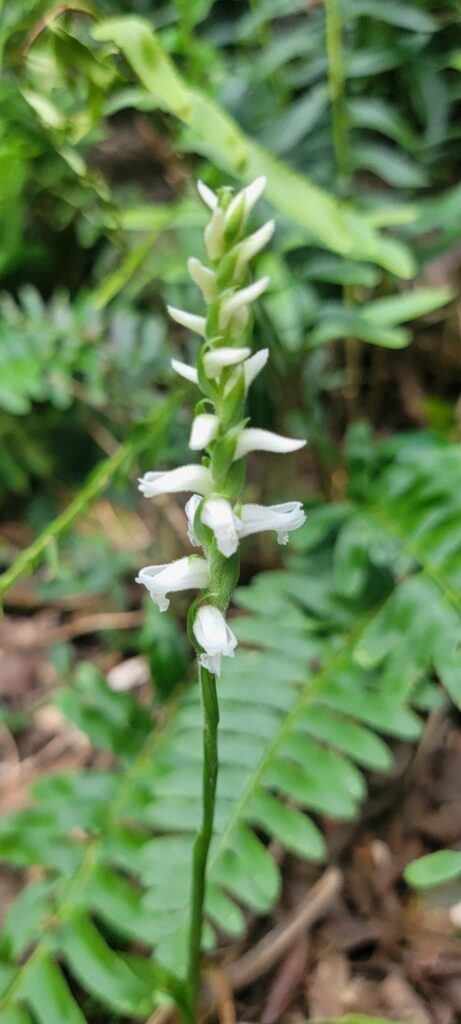Horticulture Highlight: Ladies Tresses, Spiranthes sp.

We highlight the genus Spiranthes, with its common name of Ladies Tresses. This is a genus presently with about 30 worldwide species of terrestrial perennials occurring in North America, Central America, South America, Europe, Asia, north Africa and Australia. These perennial orchids can be and have been perplexing to taxonomists. Their list of common names, each with differing accompanying Latin names include nodding ladies tresses, fragrant ladies tresses, slender ladies tresses, hooded ladies tresses, woodland ladies tresses, marsh ladies tresses, little ladies tresses, grass-leaved ladies tresses, lacelip ladies tresses, long lipped ladies tresses, spring ladies tresses, summer ladies tresses, autumn ladies tresses, reclusive ladies tresses, Appalachian ladies tresses, great plains ladies tresses, Atlantic ladies tresses, Nepalese ladies tresses, etc.
We quote from orchid authority, Robert L. Dressler in his The Orchids: Natural History and Classification, “In our present state of knowledge, no classification can be the final word.
A classification should be viewed both as a hypothesis to be tested with new information and, ideally, as a guide in search for new information…”. One example of this floristic transitoriness comes close to home for us with Spiranthes grayi, Gray’s ladies tresses, named as a species, in the early twentieth-century by Harvard University’s renowned orchid expert, Oakes Ames (1874-1950). He named this to honor the earlier notable Harvard botanist, Asa Gray (1810-1888), namesake of our Asa Gray Garden and buried on Holly Path. However, with advanced analysis this species status was rescinded, combined within Spiranthes tuberosa as var. grayi.
Taxonomy aside, October is the time to seek out the delicate, fragrant, small flowers of our native and rare Spiranthes odorata, Marsh Ladies Tresses. During this commencement of autumn, asters and goldenrods may attract much more attention throughout our landscape, but we turn to Emily Dickinson to capture the delight of aficionados of these rare and eye-catching plants.
If you were coming in the fall,
I’d brush the summer by
With half a smile and half a spurn,
As housewives do a fly.
-Emily Dickinson

Spiranthes odorata, Marsh Ladies Tresses are recognizable by their unique vertical rows of tiny flowers (as with many of the differing species within the genus), sometimes braided spirally around their 8-18-inch, unbranched stems. Each flower, slightly curved downward, is about 1/3-inch long, with 3 white petals and 3 white sepals. The etymology comes from Greek speira meaning spiral or twisted and anthos meaning flower. Odorata of course alludes to fragrance.
Bumblebees, Bombus sp., are the most frequent pollinators of Ladies Tresses.
…As the fainting bee,
Reaching late his flower
Round her chamber hums,
Counts his nectars-enters,
And is lost in balms!
-Emily Dickinson
On an early autumn visit to Mount Auburn look for Spiranthes odorata, Marsh Ladies Tresses, and maybe a few bumblebees, at the Gardner Tomb on Oxalis Path.

Withered orchids scatter the highroad as the officer rides away
Heaven itself will wither in pity…
-Li Ho
…I desire that you would remember the ladies,
and be more generous and favorable
to them than your ancestors…
-Abigail Adams

Comments are closed.